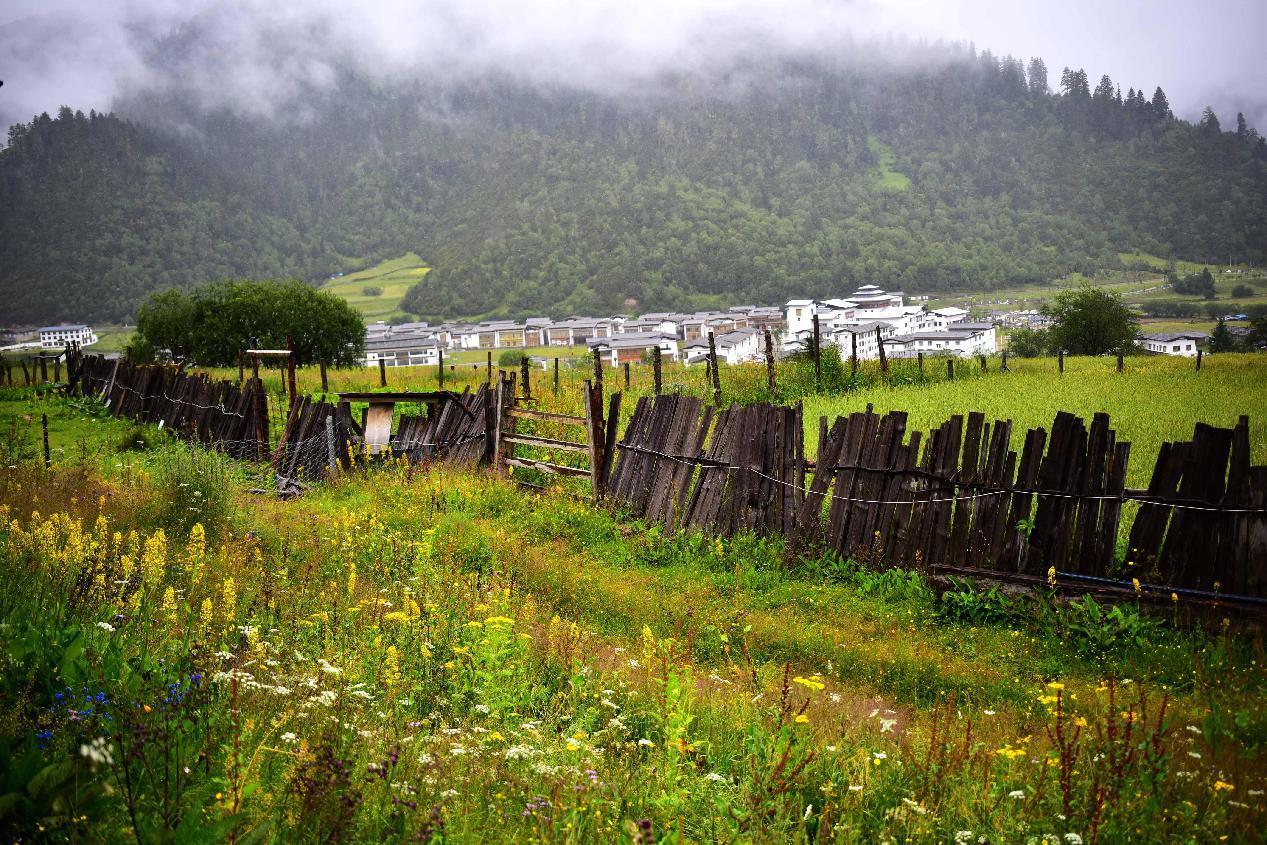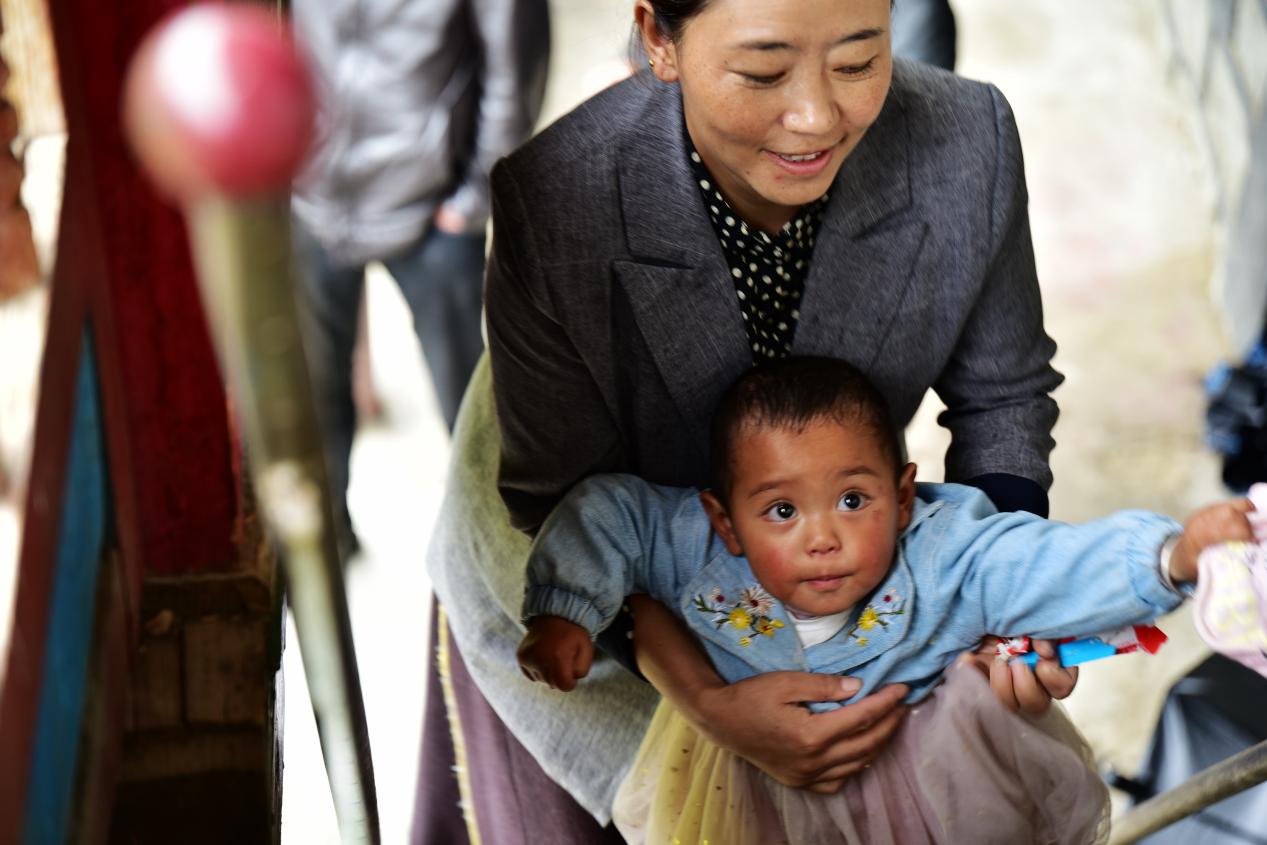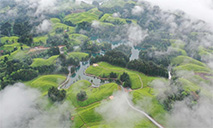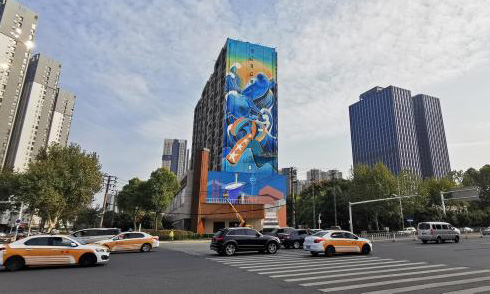Sound ecology brings better life to people in Nyingchi, Tibet
Ecology is the most important resource in Nyingchi, southwest China’s Tibet autonomous region. In recent years, the city has strengthened ecological protection and restoration, and continuously improved its ecological environment.

Photo shows peach blossoms in Bome county, Nyingchi city, southwest China’s Tibet autonomous region. (People’s Daily Online/Lu Wenkai)
Based on its advantages of sound ecology and natural beauty, Nyingchi has vigorously developed characteristic tourism and made ecotourism the most direct and effective channel for increasing the income of local farmers and herdspeople.
In Nyingchi, which hosts China’s second largest forestry area, logging used to be a major source of income for local people. Over 20 years ago, Lulang township, Bayi district of Nyingchi, had long been a state-owned forest farm.
Since Tibet completely banned logging in natural forests for commercial purposes at the end of the 20th century, Lulang township has accelerated the transformation of its growth model and concentrated efforts on ecotourism development.
In 2017, Lulang International Tourism Town, a key tourism project in the township, opened for business, thanks to the assistance provided by south China’s Guangdong province under China’s “pairing assistance” program.
In Lulang International Tourism Town, a sewage treatment plant by the roadside is particularly eye-catching.
The plant, which cost more than 25 million yuan ($3.8 million), was built for achieving the goal of net zero emissions of greenhouse gases in the town, said Wangdu, director of the Lulang Scenic Area Management Committee.
Wangdu noted that other environmental protection facilities and projects, including household waste treatment facility and landscape project, have also been introduced for the realization of the goal.

Photo shows the scenery of Lulang township, Nyingchi city, southwest China’s Tibet autonomous region. (People’s Daily Online/Zhu Zhenqiang)
A good ecological environment represents the resources that Lulang people rely on to live a better life, noted Wangdu, who believes that only by building to high standards environmental protection facilities such as waste transfer station and sewage treatment plant and formulating strict rules and regulations on environmental protection can the local government ensure that the operation and maintenance of the town does not cause a burden to the environment.
Apart from Lulang township, environmental awareness has been integrated into the development of many other places in Nyingchi besides.
A high-standard sanitary landfill to the west of Bome county, Nyingchi, and in the south side of No. 318 National Highway is under construction. Bome county’s decision to build high-standard waste treatment facilities was based on its full consideration of local economic growth and development prospects of tourism.
The landfill, built with assistance from Guangzhou, capital of Guangdong province, under the “pairing assistance” program, will not pollute the soil and groundwater and can preliminarily ensure that it will emit no offensive odor, posing little threat to nearby residents' production or way of life.
“Green” is rarely seen in the Grand Canyon of Nujiang River, which seems to be dominated by taupe stones. Surprisingly, clusters of cactuses and pomegranate trees can be found on many hillsides of Tsawarong township, Zayu county, Nyingchi, in the Grand Canyon of Nujiang River, which inject vitality into the canyon.
The cactuses naturally grow in the region and turn into trees when they are old enough. “Our cactus clusters marvelously form woods. Nowadays, more and more tourists from Yunnan province are attracted to the cactus woods, and many often stop to take pictures there,” said secretary of the Communist Party of China branch of Zuobu village, Tsawarong township.
The pomegranate trees have been planted in recent years. Villagers only grew pomegranate trees near their houses in the past; since 2018, Tsawarong township has gradually built characteristic pomegranate tree planting bases based on its plan for poverty alleviation and ecological restoration, according to Wu Mingjun, secretary of the Party committee of Tsawarong township and deputy director of the standing committee of the people’s congress of Zayu county.
The township has planted 289,100 soft-seed pomegranate trees covering an area of over 6,400 mu (about 427 hectares), Wu said, adding that in a bumper year, these pomegranate trees are expected to produce a total of 3,000 tons of pomegranates with an output value of 36.9 million yuan, which can increase the per capita income of residents in the township by about 5,700 yuan.
In the past five years, Nyingchi has planted 360,000 mu of trees, brought under control 450,000 mu of desertification areas, tended 180,000 mu of forests, and built more than 10,000 mu of fine varieties of nursery stock.

Photo shows a Tibetan resident who runs a B&B hotel in Lulang township, Nyingchi city, southwest China’s Tibet autonomous region. (People’s Daily Online/Zhu Zhenqiang)
This year, it plans to green over 20,000 mu of land, including more than 15,500 mu of trees planted under key ecological restoration projects.
In the future, Nyingchi will continue to intensify efforts to restore ecosystems in key areas and carry out ecological restoration and afforestation projects, including ecological restoration at the confluence of rivers, to improve the quality and stability of its ecosystems.
While Nyingchi’s ecological environment improves, local people also enjoy a better life.
With the advancements of infrastructure projects in Nyingchi in recent years, including the expansion of Nyingchi Mainling Airport and the construction of Lhasa-Nyingchi Railway and High Grade Highway, the bottlenecks hindering Nyingchi’s ecotourism development have been removed, which allows the city to give full play to its ecological advantages.
Last year, various tourism entities in Nyingchi city drove 27,500 farmers and herdspeople to switch to a job in the tourism sector, a year-on-year increase of 4 percent. These farmers and herdspeople earned a total income of 96.36 million yuan, a rise of 16 percent from the previous year.
The number of farmers and herdspeople working in rural tourism reached 18,000 in 2021, up 0.65 percent year on year, while people’s income from jobs in the industry rose to 66.95 million yuan, an increase of 48 percent from a year before.
Photos
Related Stories
- Improved roads in rural areas in China’s Tibet benefit local people
- Villagers in Tibet’s Nyingchi become prosperous through rural tourism
- Tibet embraces caterpillar fungus harvest
- Ecological resources become ‘immovable property’ guaranteeing people’s happy life in Tibet
- Children's literature in Tibetan language turns new page
- Plateau roads pave way for Tibet's rural revitalization
- Tibet prioritizes ecological protection in development
- Rural roads in Tibet exceed 90,000 km
- Tibet makes progress in prehistoric archaeology research
- Over 1.1 mln folios of ancient texts archived at Tibet's Potala Palace
Copyright © 2022 People's Daily Online. All Rights Reserved.










